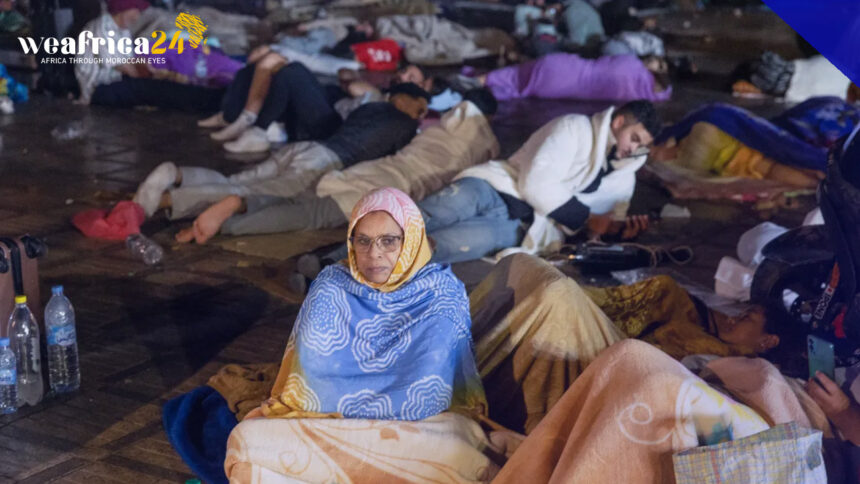Morocco, a nation endowed with a rich and diverse history, has not been exempt from the ravages of powerful earthquakes throughout its ancient and modern past. Beyond the recent earthquake in 2023, the country has endured a series of seismic events, some of which wrought far greater devastation. Located at the confluence of the African and Eurasian tectonic plates, Morocco’s seismic vulnerability is a well-established scientific fact.
Agadir Earthquake (1960)
One of the most destructive earthquakes in Morocco’s modern history, the Agadir earthquake left the city of Agadir in ruins, rendering it unrecognizable and displacing 35,000 people. Striking on February 29, 1960, the earthquake registered a magnitude of 5.8 on the Richter scale, lasting a mere 15 seconds. Nevertheless, it claimed the lives of 15,000 people, representing more than a third of the city’s population. The catastrophe struck during the night of the third day of Ramadan, a time when many residents were gathered for meals and prayers, exacerbating the death toll. The historic Kasbah of Agadir, dating back to the 16th century, was among the structures obliterated.
In the aftermath, Moroccan authorities conducted an extensive rescue operation, with assistance from French, American, and Dutch military personnel. King Mohammed V ordered the complete reconstruction of Agadir. Despite these efforts, the Agadir earthquake remains one of Morocco’s most significant and devastating seismic events in modern history.
Great Lisbon Earthquake (1755)
Among the most destructive earthquakes in European history, the Great Lisbon Earthquake, which struck on November 1, 1755, had far-reaching consequences, affecting North Africa and the Caribbean as well. With a magnitude of 8.5 on the Richter scale, the earthquake’s epicenter was in the Atlantic Ocean near Cape Saint Vincent.
The earthquake not only devastated the Portuguese city of Lisbon but also extended its impact to the Moroccan coastline, particularly the city of Tangier, along with coastal towns including Rabat, Larache, and Agadir. The event triggered a subsequent earthquake, fires, and a tsunami, collectively destroying Lisbon and its surrounding regions.
Estimates suggest that the Great Lisbon Earthquake claimed between 40,000 to 50,000 lives, with approximately 10,000 fatalities in Morocco alone. It remains one of the most significant seismic events in Moroccan and European history.
Meknes Earthquake (1755)
Closely following the Great Lisbon Earthquake, the Meknes Earthquake struck Morocco on November 27, 1755. With a magnitude of 7 on the Richter scale, the city of Meknes bore the brunt of the disaster. Initially classified as an aftershock of the Lisbon earthquake, modern studies now regard it as a separate and significant event.
The earthquake wrought extensive destruction in both Moroccan cities of Meknes and Fes, claiming the lives of at least 15,000 people. A French study published in 2009 indicated that half of Meknes’ Jewish population, totaling 16,000 individuals, perished, in addition to 4,000 Muslim residents of the city. An additional 3,000 deaths occurred in Fes. The devastation also extended to the ancient Roman site of Volubilis, a UNESCO World Heritage site since 1997. The Meknes Earthquake stands as one of the most substantial seismic events in Moroccan history.
Al Hoceima Earthquake (2004)
On February 24, 2004, the Al Hoceima Earthquake struck Morocco’s northern coast, causing the deaths of over 600 people and ranking as one of the most violent earthquakes in the region. The earthquake, with a magnitude of 6.5 on the Richter scale, occurred in the early hours of the morning. It was a consequence of the tectonic activity along the boundary between the African and Eurasian tectonic plates, in one of Morocco’s most seismically active areas.
In addition to the 630 lives lost, more than 900 individuals were injured, and around 15,000 were displaced from their homes. Like the recent earthquake that affected Morocco, the impacted areas were mountainous, posing challenges for rescue teams.







